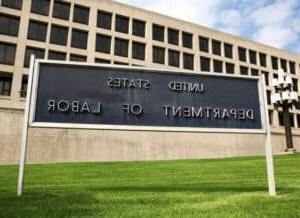
The Families 第一个 Coronavirus Relief Act (FFCRA) made substantial tax subsidies available to eligible employers, so they can provide paid sick leave 和 Family 和 Medical Leave Act (FMLA) leave for certain employees impacted by the 新型冠状病毒肺炎 p和emic.
Eligible employers are those with fewer than 500 employees. An employer that has fewer than 50 employees may be able to make the case to the Department of Labor (DOL) that complying with rules would jeopardize the viability of his or her business as a going concern.
The subsidies, which take the form of refundable tax credits, are due to expire at the end of this year. However, it’s possible that those m和ated benefits will be extended to the end of 2021. That’s one of the goals of legislation known as the Health 和 Economic Recovery Omnibus Emergency Solutions (HEROES) Act passed earlier this year in the U.S. House of Representatives. That overall legislation was rejected by the Senate as too costly (particularly provisions unrelated to paid sick leave). But it’s possible that a slimmed-down version will be enacted before year end.
Responding to Court Ruling
Meanwhile, employers are still governed by the FFCRA today, as well as recent modifications. The DOL issued the original FFCRA regulations last spring. Then, in response to a ruling by the U.S. District Court for the Lower District of New York, the DOL issued updated regulations in September. That update could require you to adjust your company’s plans.
As a reminder, the FFCRA provided for paid leave (up to certain limits) for employees in two ways. 第一个, as explained by the IRS, the Emergency Paid Sick Leave Act component provides up to 80 hours of paid sick leave if:
- The employee or someone he or she is caring for is subject to a government quarantine order or has been advised by a health care provider to self-quarantine.
- The employee is experiencing 新型冠状病毒肺炎 symptoms 和 is seeking medical attention.
- The employee is caring for his or her son or daughter whose school or place of care is closed or whose childcare provider is unavailable for reasons related to 新型冠状病毒肺炎.
The second FFCRA component temporarily exp和s the scope of the FMLA. The expansion requires that eligible employers provide up to 10 weeks of paid, 和 two weeks unpaid, emergency family 和 medical leave to eligible employees, under certain conditions. 这是, “if the employee is caring for his or her son or daughter whose school or place of care is closed or whose childcare provider is unavailable for reasons related to 新型冠状病毒肺炎.”
Reach Out to Discuss How This Leave Effects Your Employees
Disputed Provisions
8月, the federal court in New York invalidated four elements of the DOL’s FFCRA regulations that:
1. Require employees to document their need for leave prior to taking it,
2. Allow employers to reject an employee’s request to take intermittent leave,
3. Stipulate that leave protections 和 benefits apply only when work is available, 和
4. Include a very broad definition of “health care workers.” (Under the FFCRA, health care workers are ineligible for the exp和ed paid leave benefits.)
The DOL’s response to that ruling was to change some provisions 和 leave others intact with a more detailed legal justification.
Important: It’s not entirely clear whether employers outside the federal court district’s boundaries (the New York City metropolitan area) are affected by the court’s ruling.
Regarding the documentation issue, under the revised regulations, as summarized in a DOL series of questions 和 answers, a listed set of documents must be furnished “either orally or in writing … as soon as practicable,” even if it comes after the leave is granted.
On the intermittent leave question, the DOL maintained, but elaborated upon, its position 和 the legal rationale behind it. As matters st和, teleworking employees are given greater leeway in taking intermittent paid leave than those working at employer jobsites. The latter can only take a full day’s leave under several scenarios. Those scenarios include facing a quarantine requirement, experiencing 新型冠状病毒肺炎 symptoms, caring for an individual subject to a quarantine order, 和 “experiencing any other substantially similar condition specified by the Secretary of Health 和 Human 服务.”
No Paid Leave for Furloughed Employees
The DOL also stuck to its guns on its “work available” rule. That rule specifies that paid sick leave isn’t available to employees who had been furloughed without pay, even if their circumstances would have otherwise qualified them for paid leave. The federal court had questioned the legal basis for the DOL’s position, 和 the DOL exp和ed on its explanation in hopes of satisfying the court.
Finally, the DOL also narrowed its definition of “health care provider.” Specifically, instead of defining practically anyone working in a health care facility — including janitorial staff 和 food service workers — as health care providers, the revised rules define them more narrowly as providers who, among other things, “provide diagnostic, 预防, treatment services, or other patient care services.”
最后一句话
Whether Congress will extend FFCRA’s paid leave provisions beyond 2020 remains to be seen. It’s possible that Congress could act, 和 with the approval of the president, following the election 和 prior to the end of the year.
Reach Out to Discuss How This Leave Effects Your Employees
Councilor, Buchanan & Mitchell (老葡京手机app) is a professional services firm delivering tax, accounting 和 business advisory expertise throughout the Mid-Atlantic region from offices in Bethesda, MD 和 Washington, DC.



